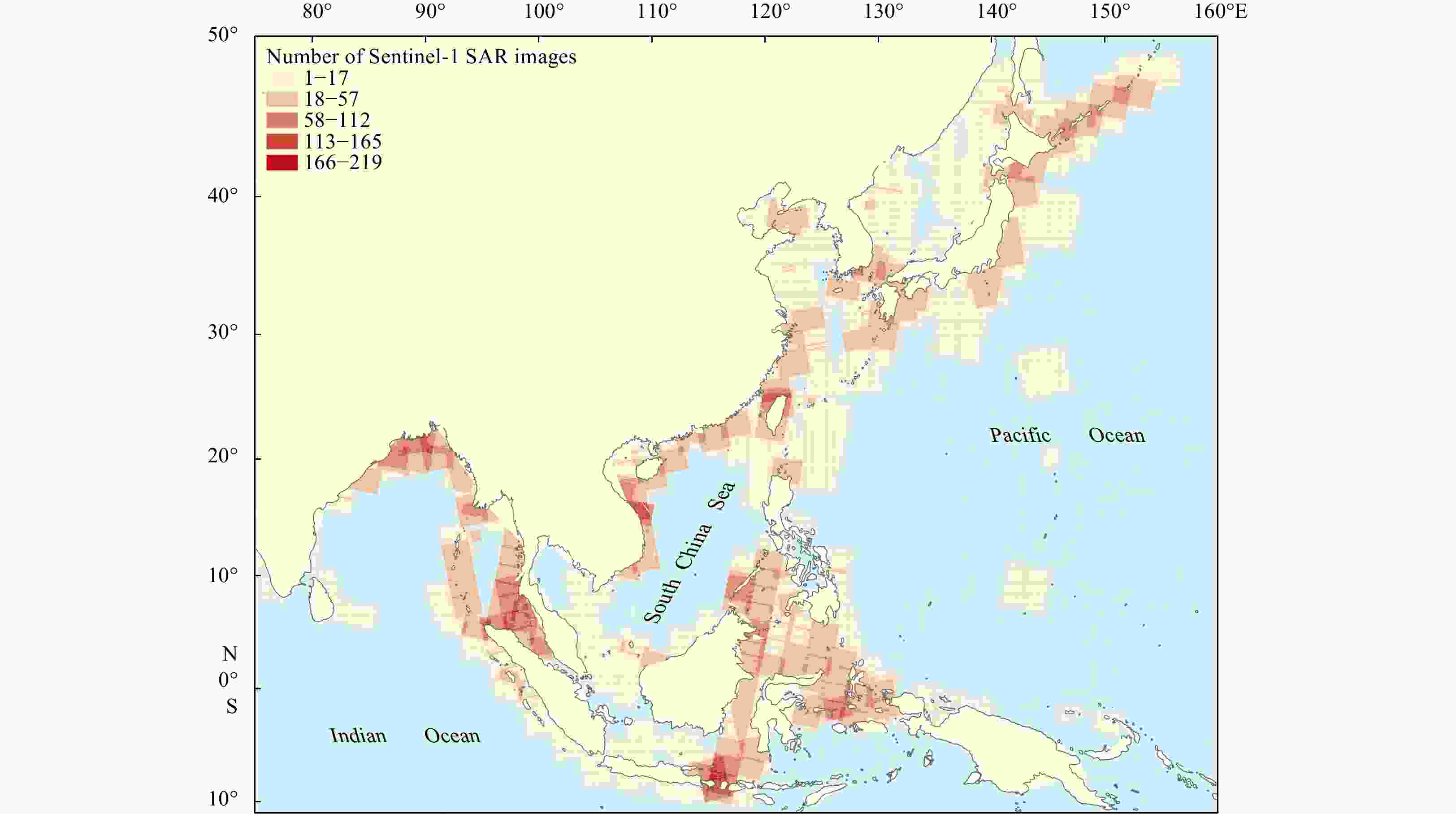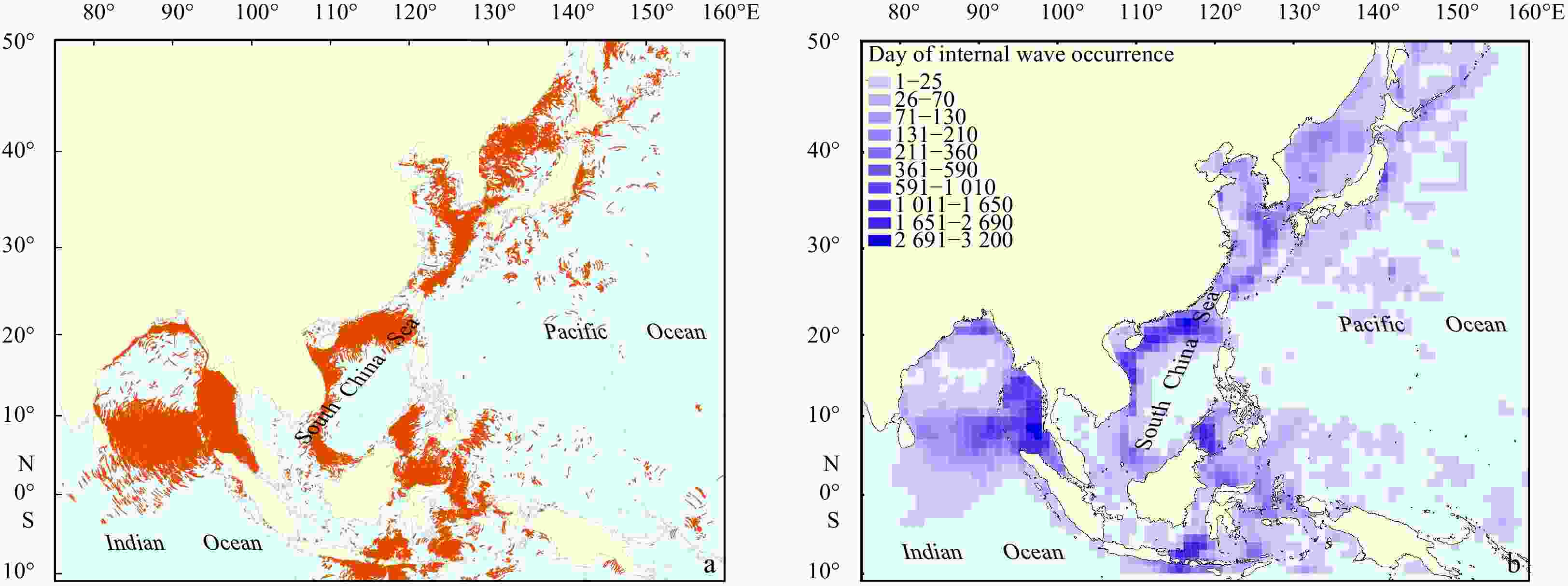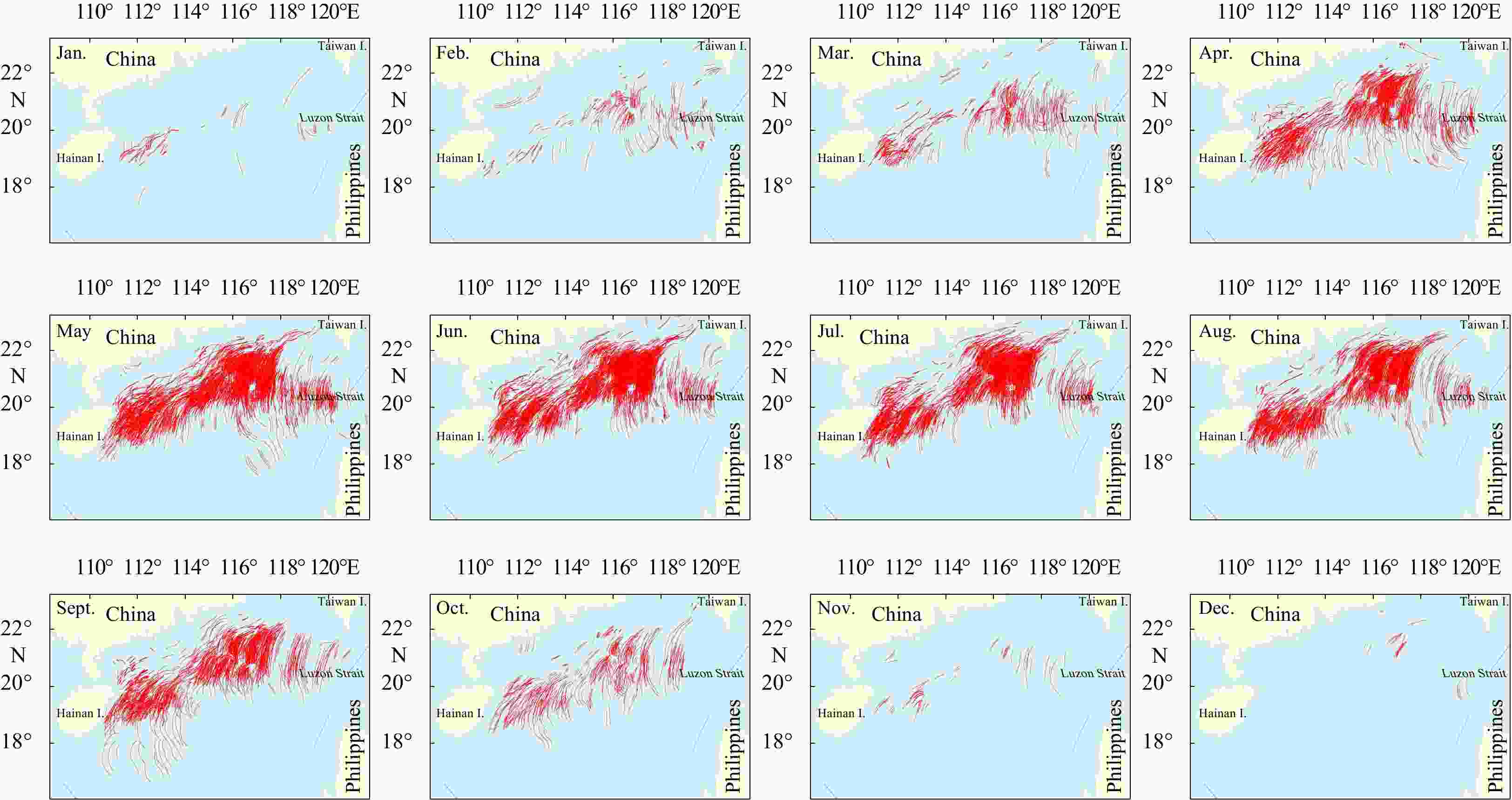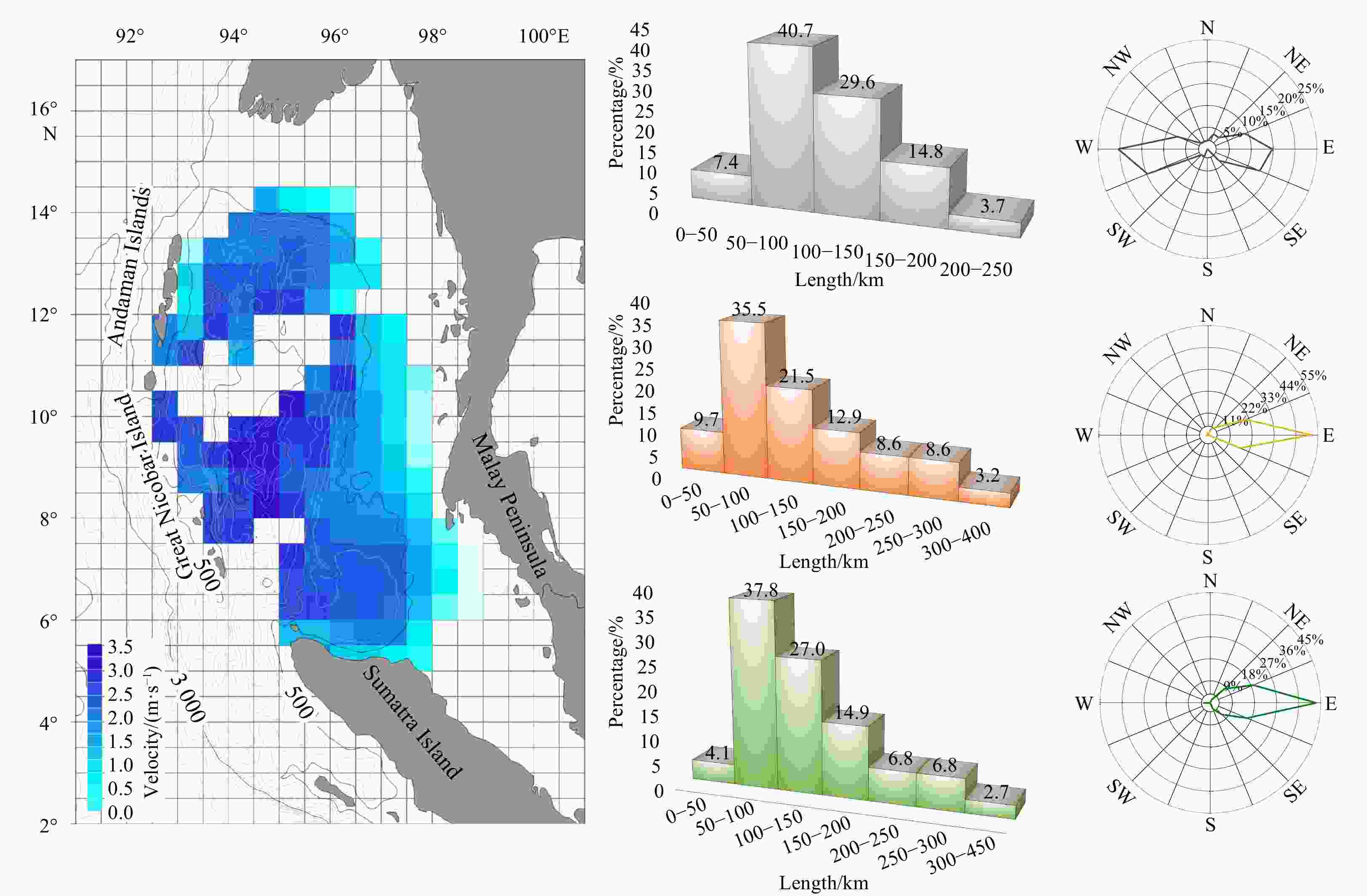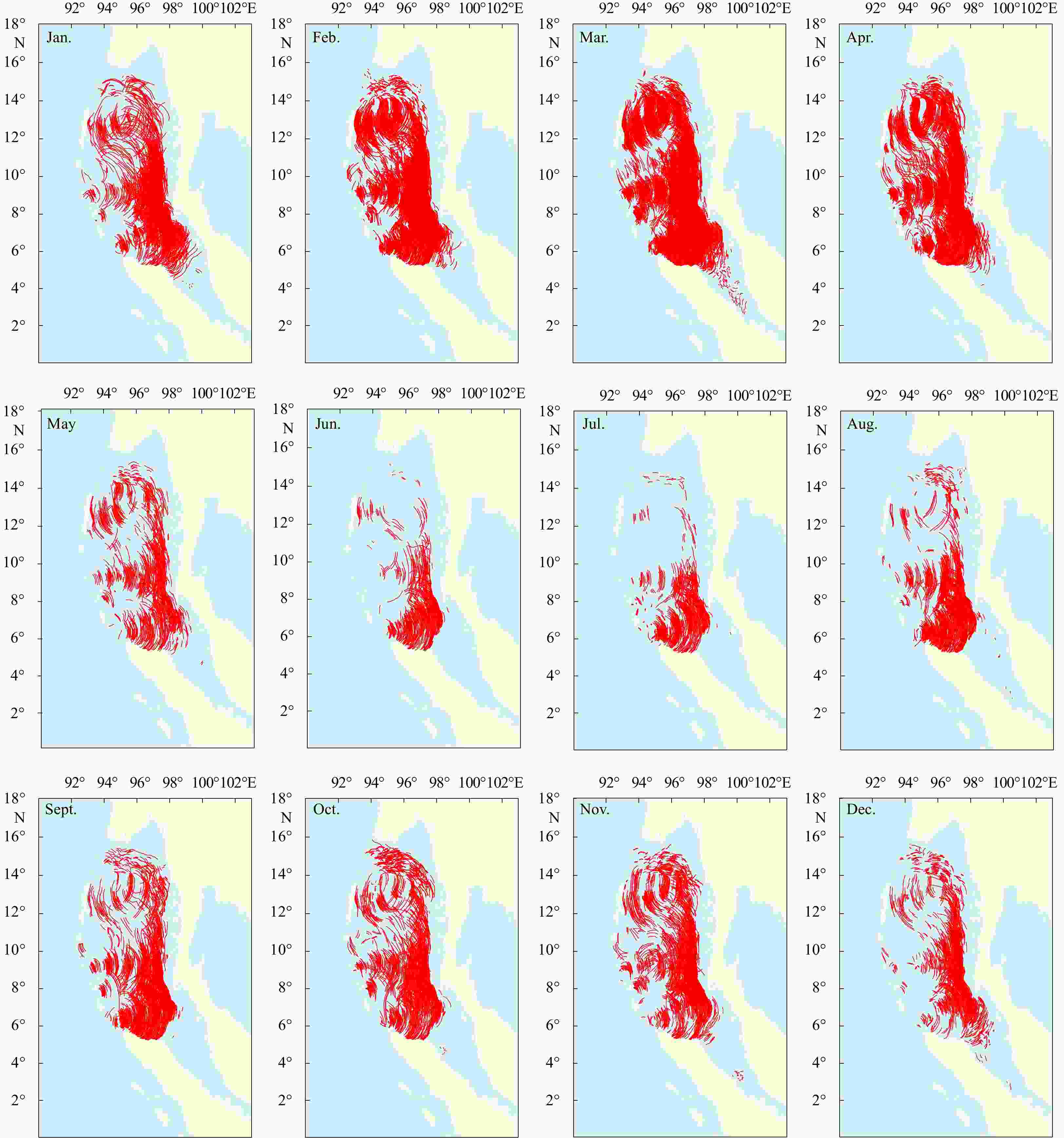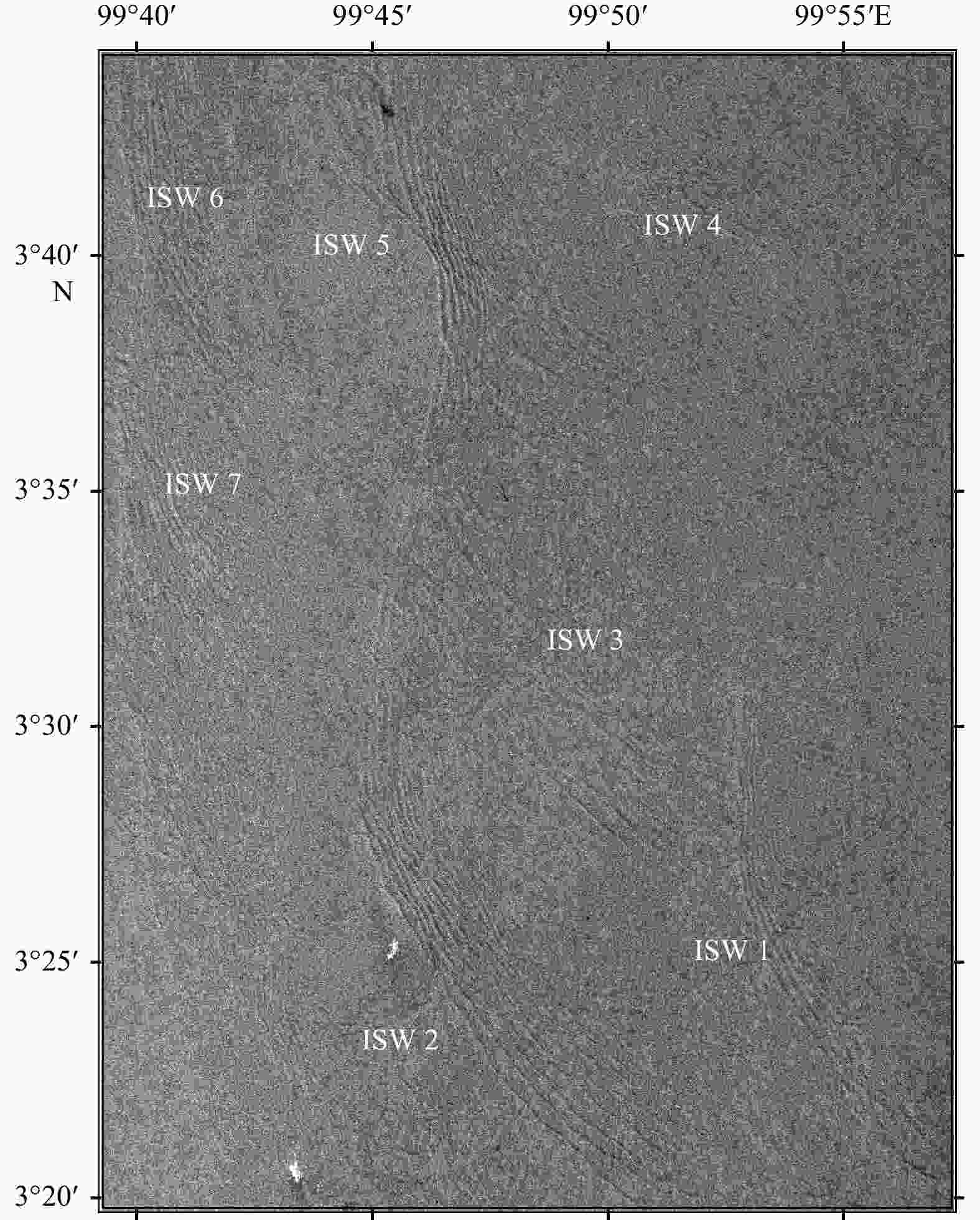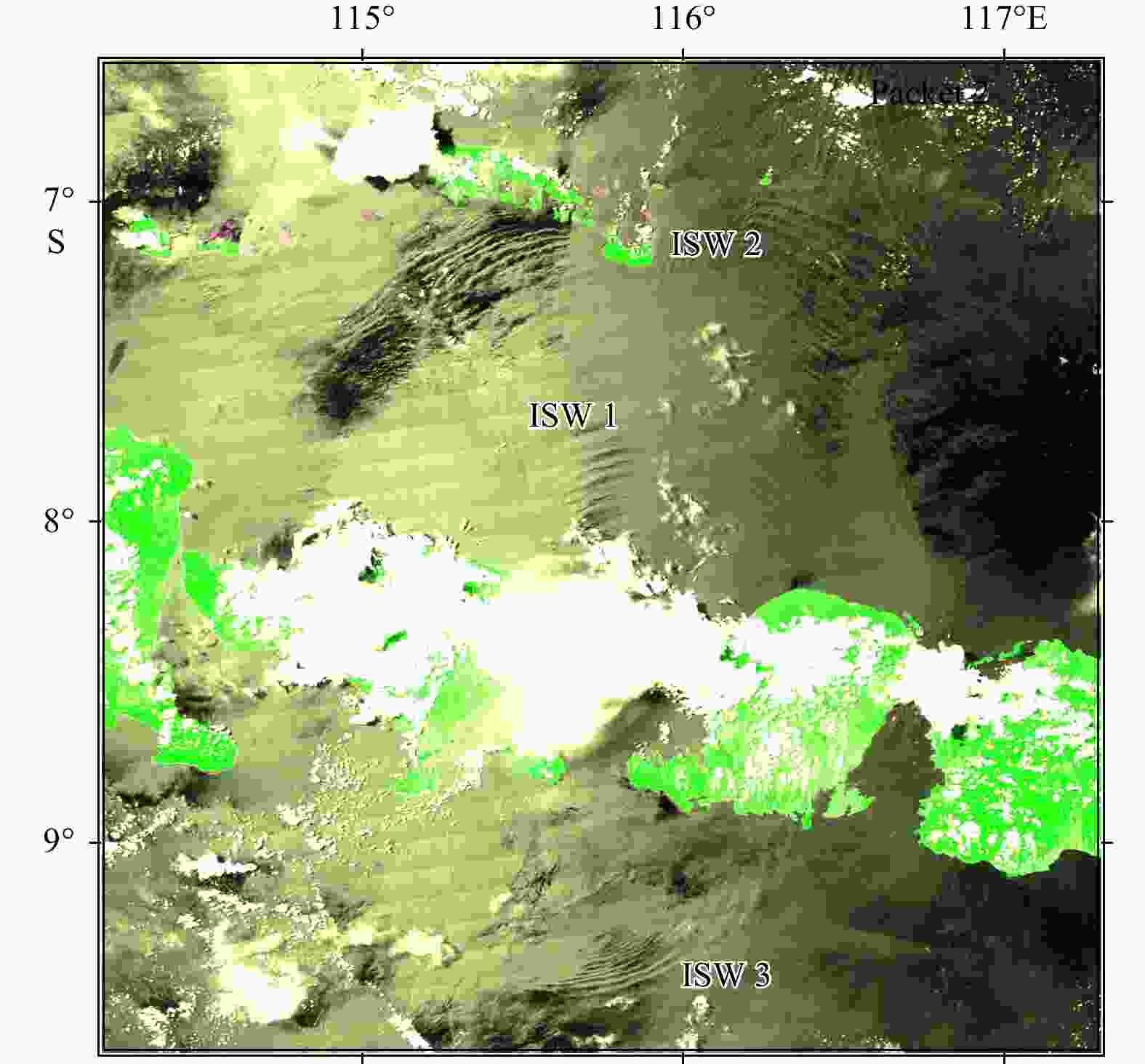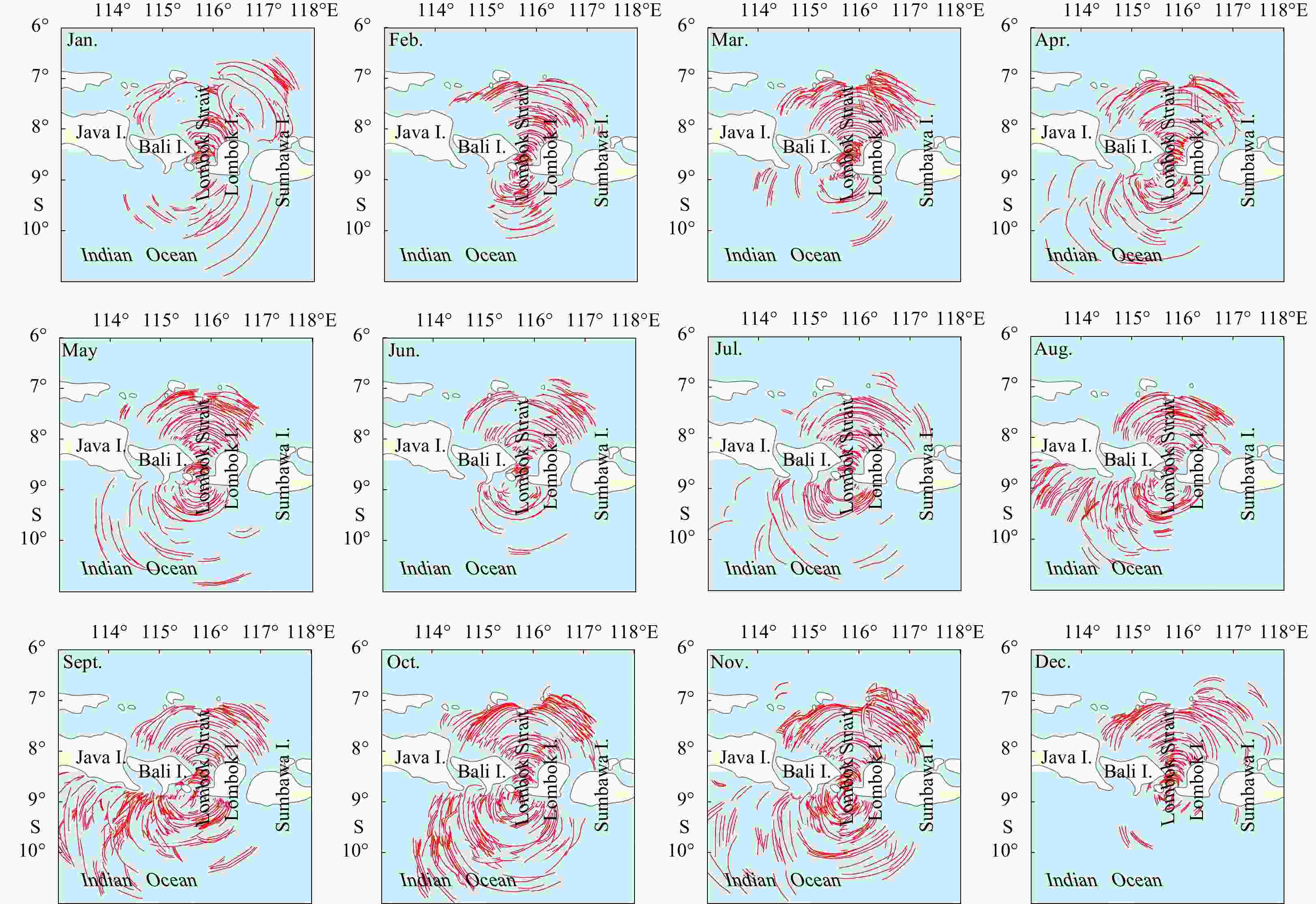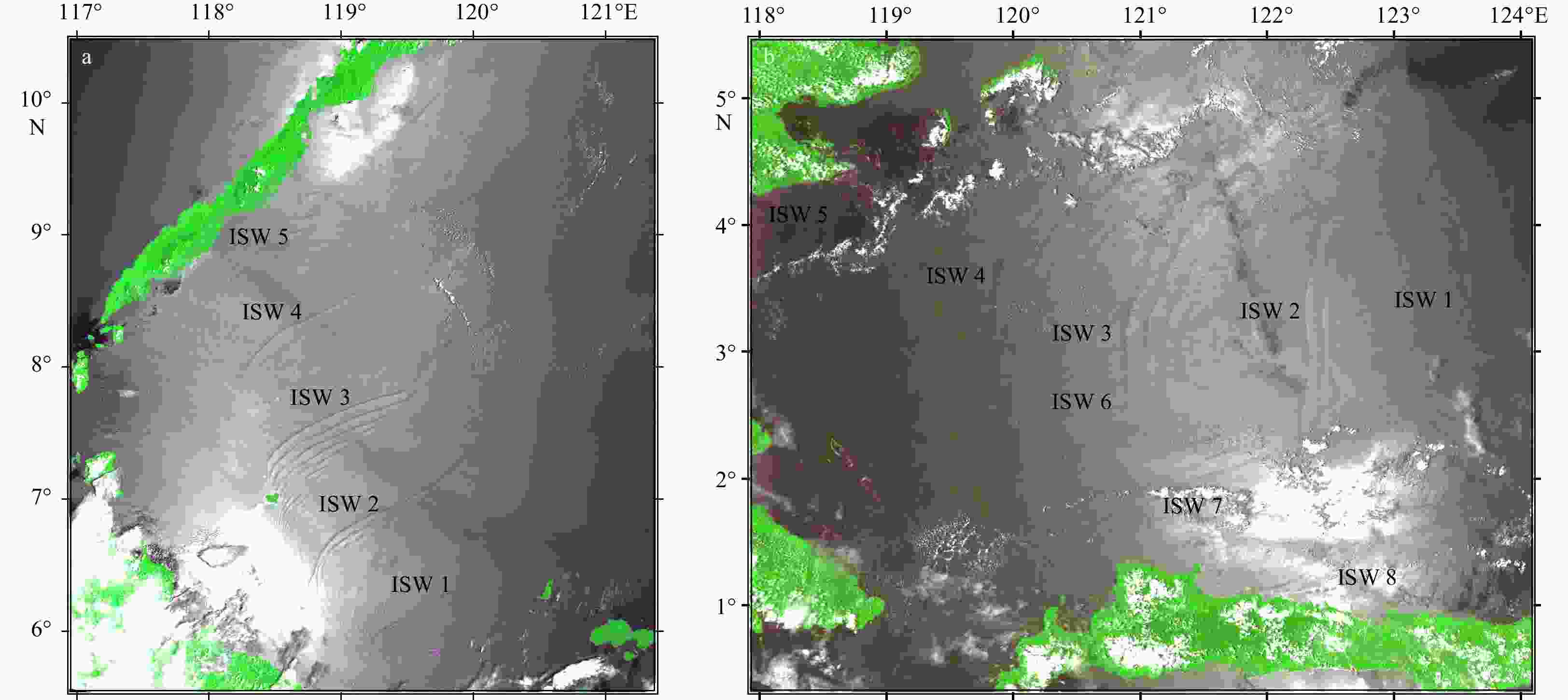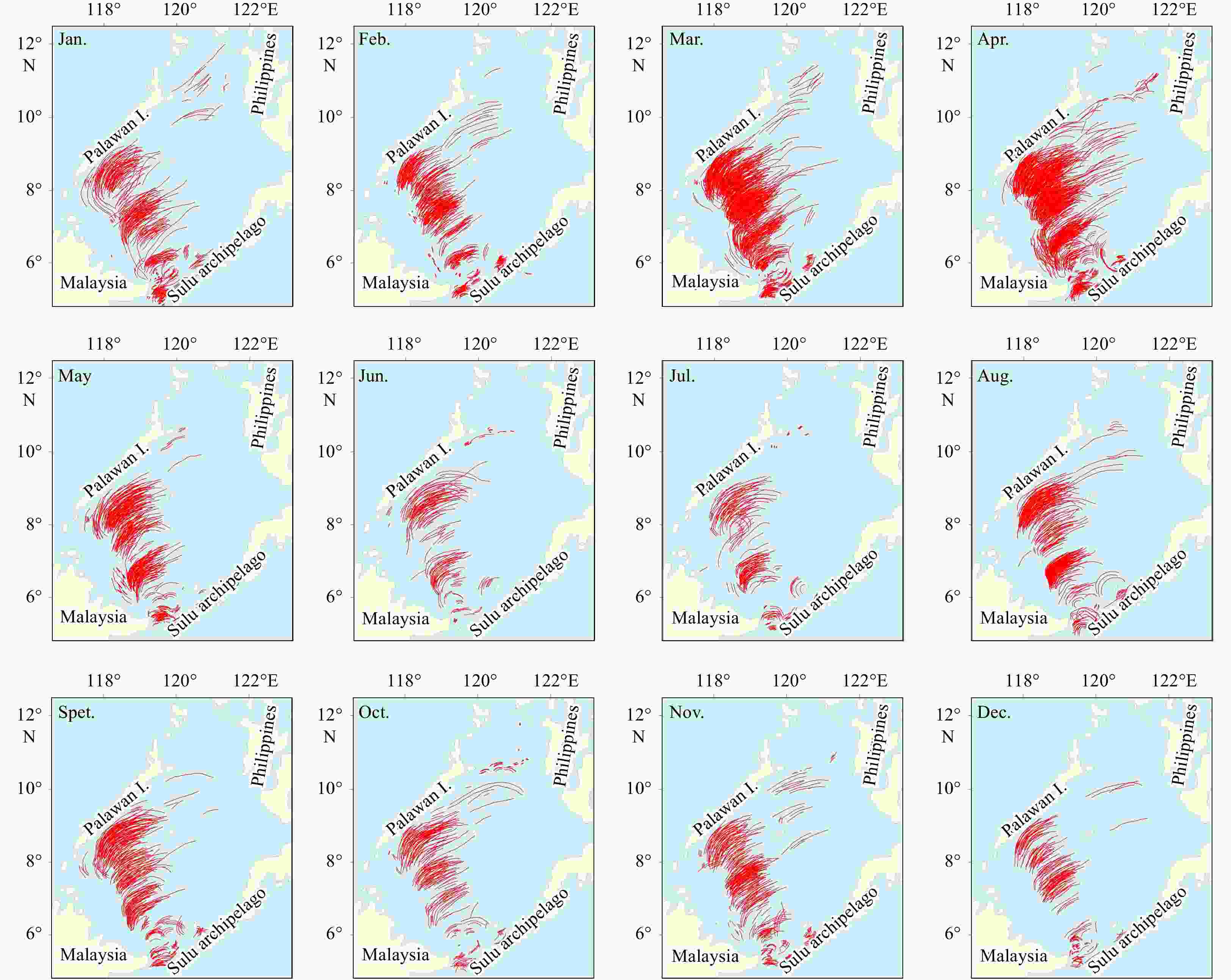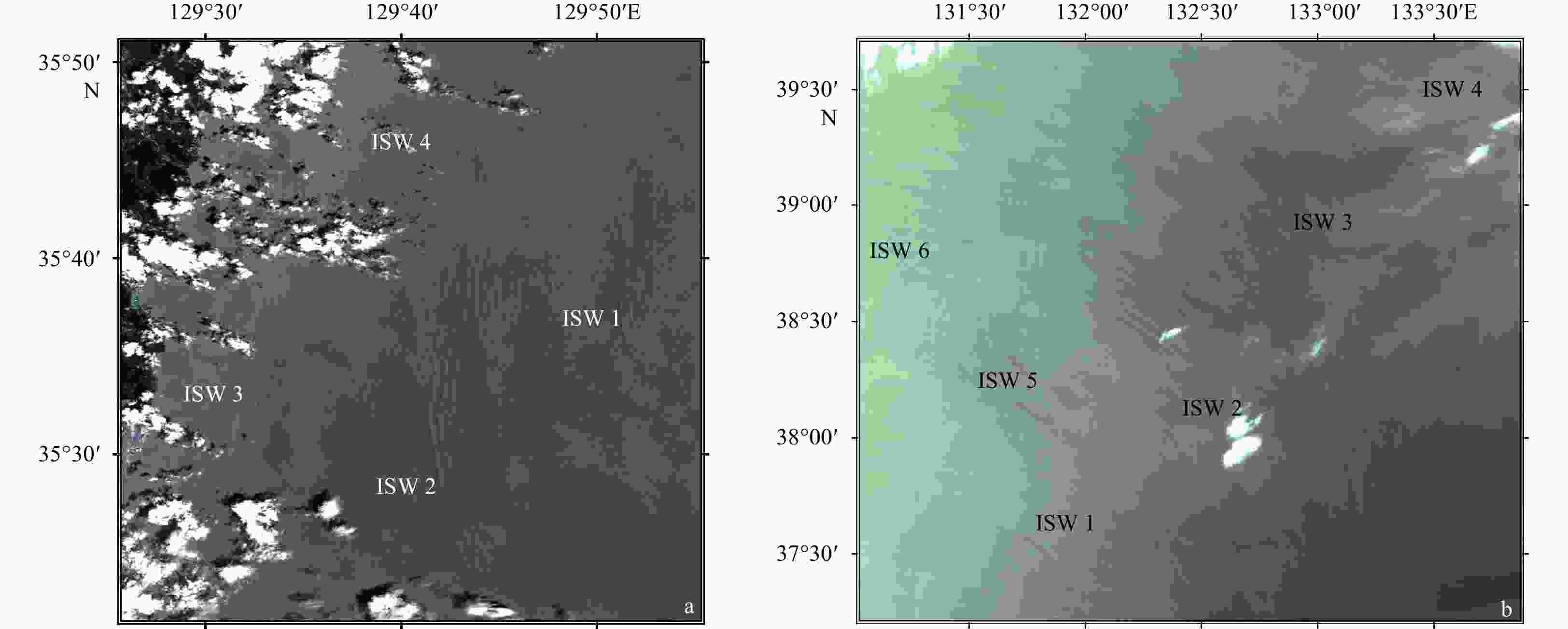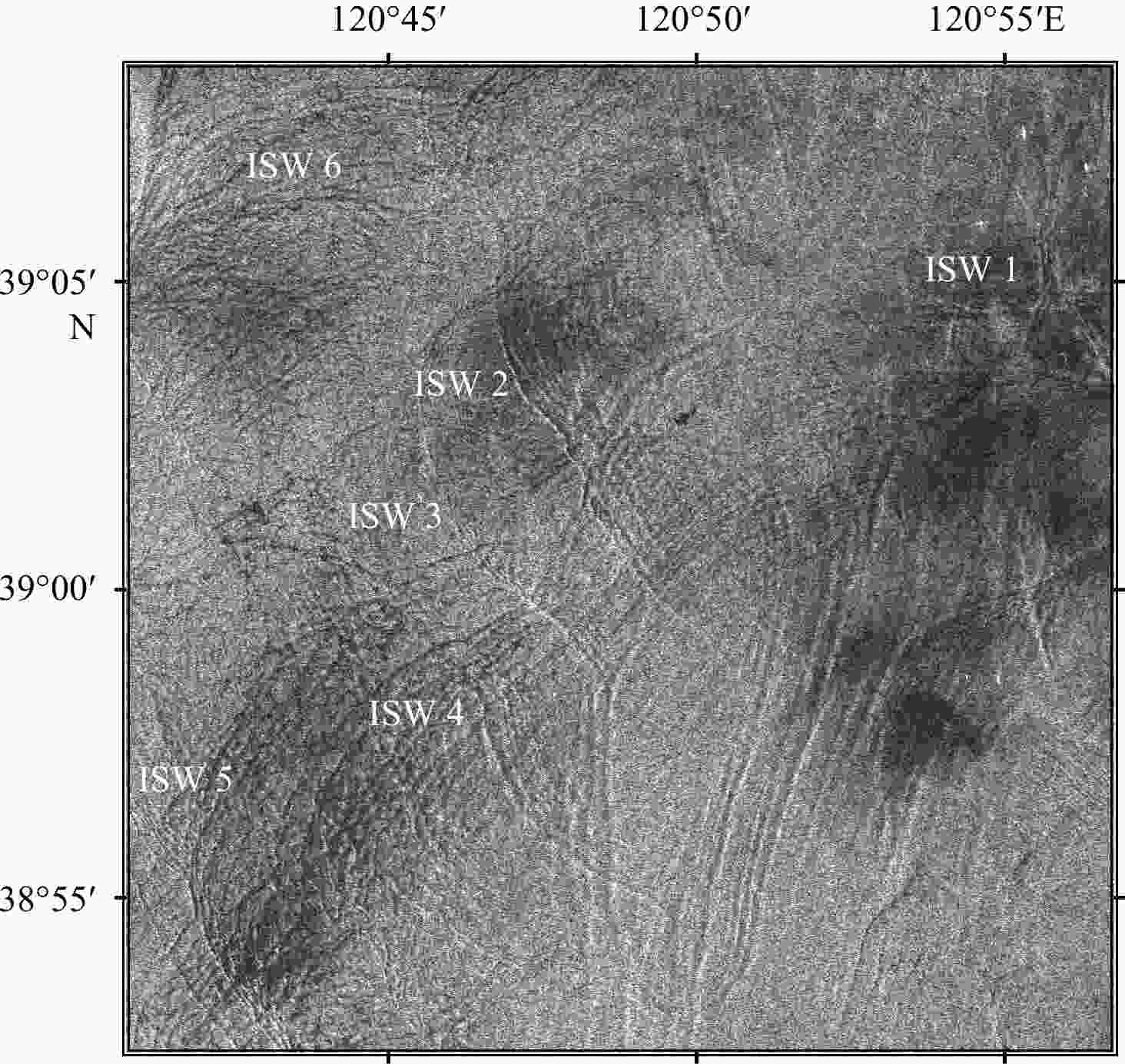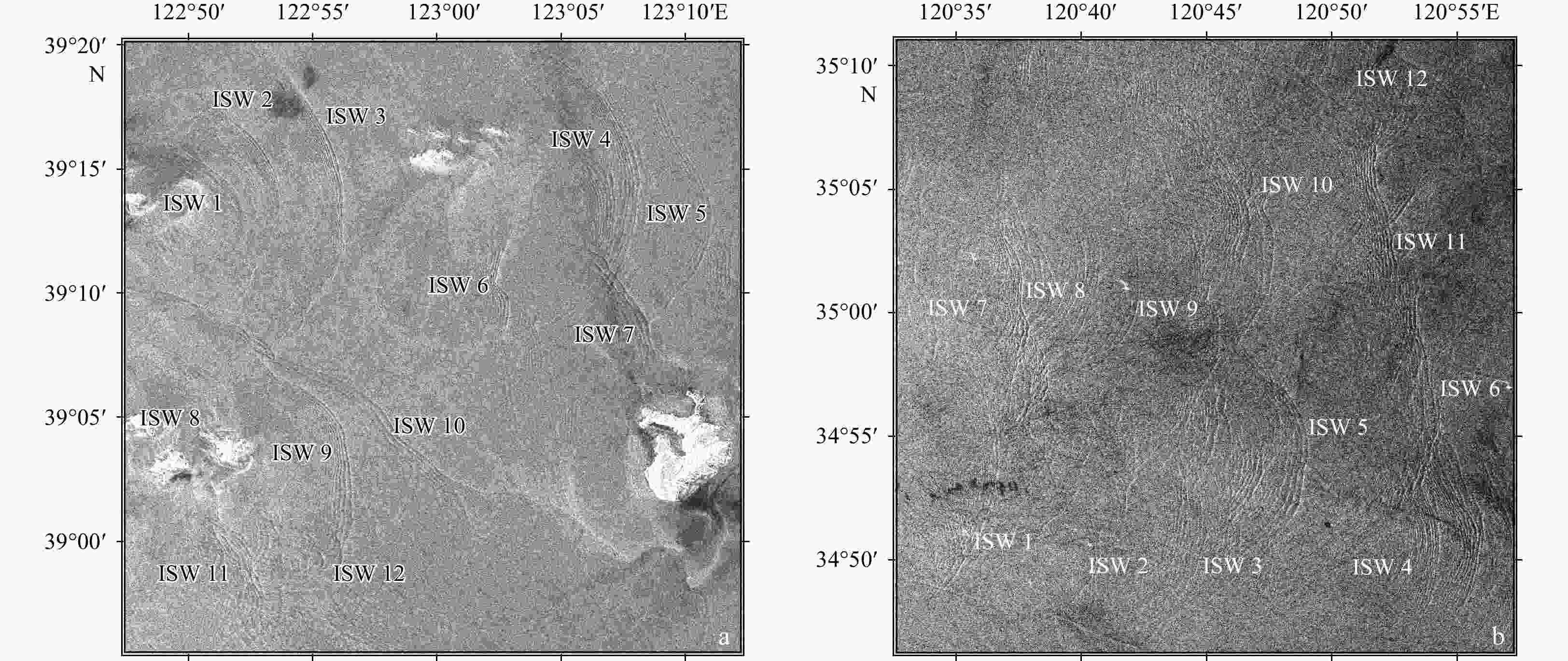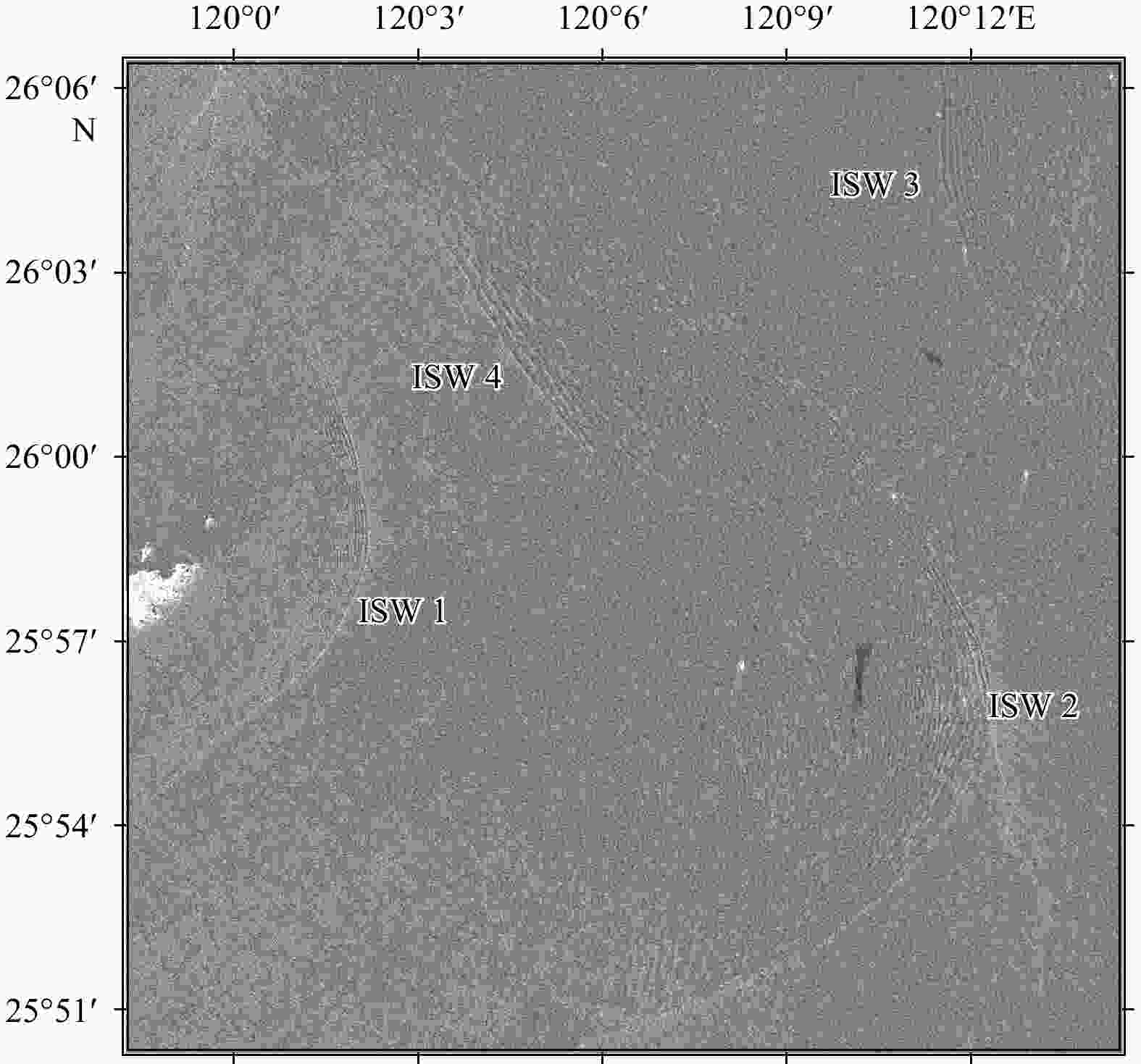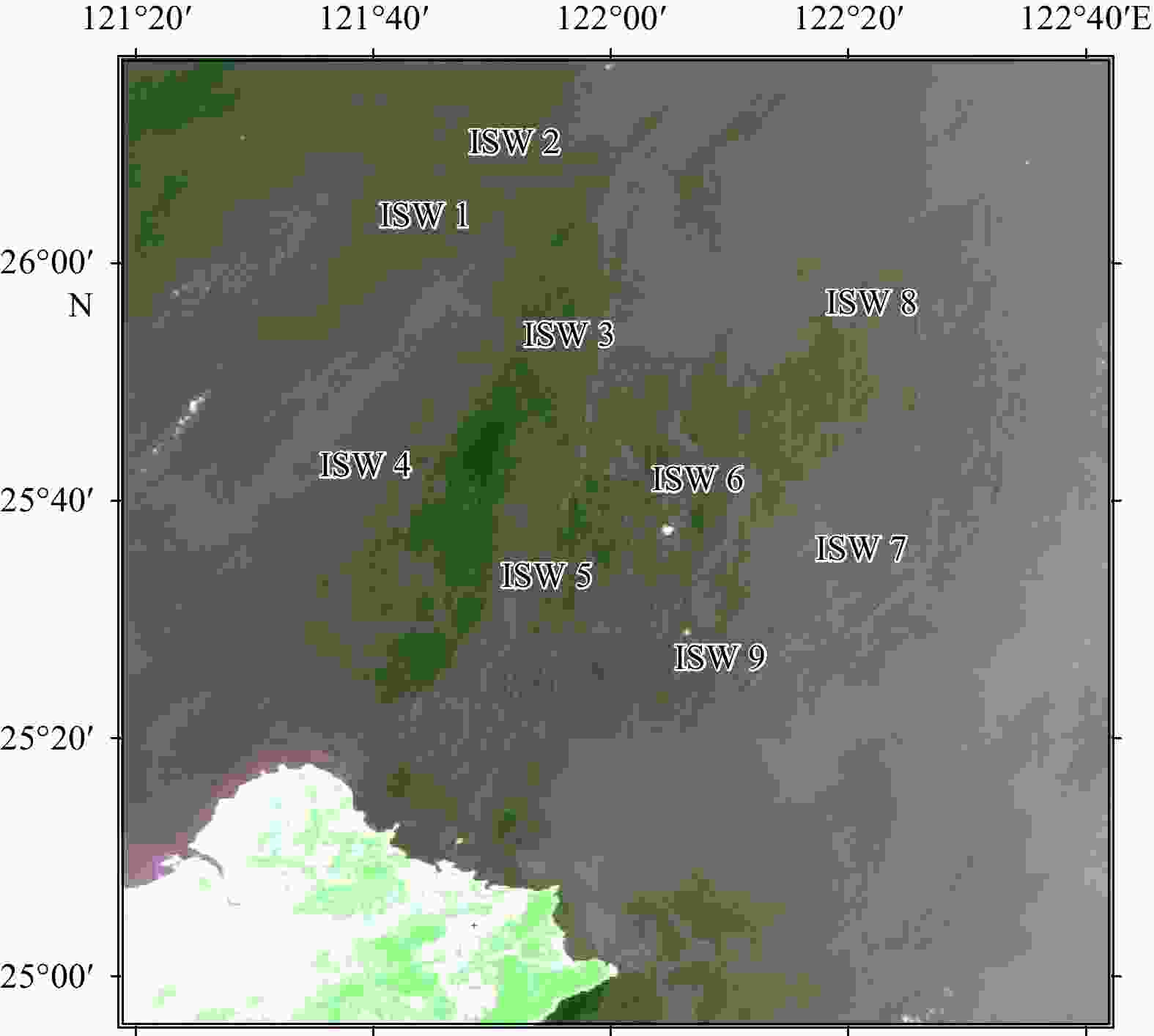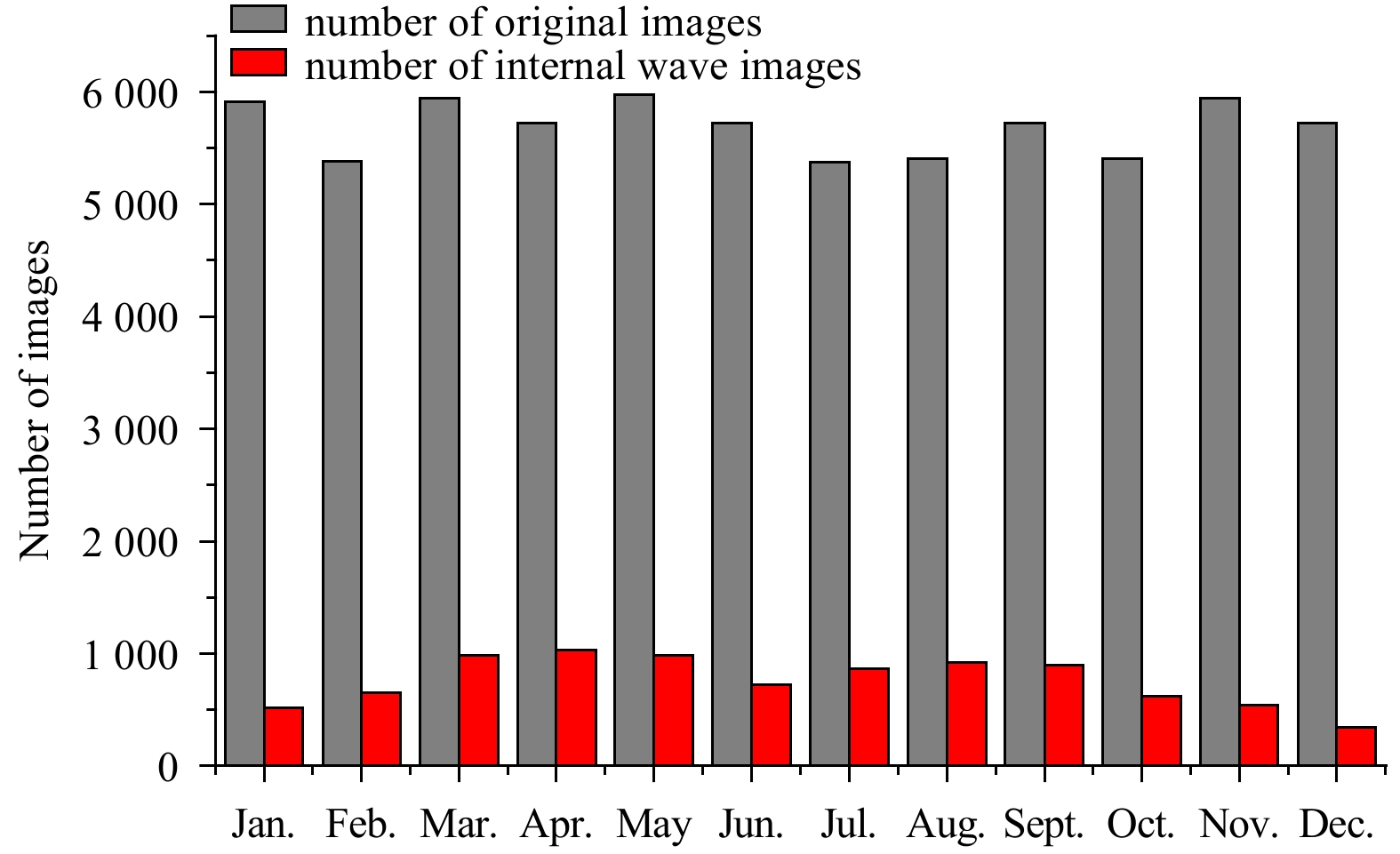Remote sensing survey and research on internal solitary waves in the South China Sea-Western Pacific-East Indian Ocean (SCS-WPAC-EIND)
-
Abstract: Internal solitary waves (ISWs) are common mesoscale dynamic processes in the ocean that are spread throughout the world’s oceans. The South China Sea (SCS), Western Pacific (WPAC) and Indian Ocean (EIND) (SCS-WPAC-EIND) are areas where ISWs frequently occur. In particular, in the northern part of the South China Sea, Sulu Sea, Celebes Sea, Andaman Sea, Lombok Strait and northeastern part of Taiwan Island, ISWs exist almost year-round. Remote sensing is an important technique to carry out investigations and research on ISWs on a large scale. In particular, optical sensors represented by the Moderate Resolution Imaging Spectroradiometer (MODIS) can observe ISWs for a long time and on a large scale, while SAR sensors such as Sentinel-1 A/B can compensate for the deficiencies in optical sensors and comprehensively observe ISWs. Based on many years of remote sensing surveys of ISWs, this paper uses MODIS and Sentinel-1 satellite remote sensing images of more than 70 000 scenes from 2010 to 2020 to carry out survey studies of ISWs in the SCS-WPAC-EIND. The survey systematically gives the temporal and spatial distribution characteristics of ISWs in the SCS-WPAC-EIND and focuses on the analysis of the ISW characteristics in main areas in the SCS-WPAC-EIND, thereby providing basic data for further research on ISWs.
-
Key words:
- internal solitary waves /
- SCS-WPAC-EIND /
- remote sensing /
- MODIS /
- Sentinel-1A/B
-
Figure 10. Characteristic parameters of ISWs in the three areas of the Andaman Sea. The left panel shows the propagation speed (m/s), the middle panel shows the length of the leading wave crest line (km), and the right panel shows the propagation direction (°) in the north, central and south of the Andaman Sea from top to bottom.
-
Alford M H, Peacock T, MacKinnon J A, et al. 2015. The formation and fate of internal waves in the South China Sea. Nature, 521(7550): 65–69. doi: 10.1038/nature14399 Alpers W, He Mingxia, Zeng Kan, et al. 2005. The distribution of internal waves in the East China Sea and the Yellow Sea studied by multi-sensor satellite images. In: Proceedings of 2005 IEEE International Geoscience and Remote Sensing Symposium. Seoul: IEEE, 4784–4787 Alpers W, Chen-Wang H, Hock L. 1997. Observation of internal waves in the Andaman Sea by ERS SAR. In: IGARSS’09. 1997 IEEE International Geoscience and Remote Sensing Symposium Proceedings. Remote Sensing—A Scientific Vision for Sustainable Development. Singapore: IEEE, 1518–1520 Andi S, Hesari A R E, Farjami H. 2021. Detection of internal waves in the Persian Gulf. Remote Sensing Letters, 12(2): 190–198. doi: 10.1080/2150704X.2020.1847349 Apel J R, Thomson D R, Tilley D G, et al. 1985. Hydrodynamics and radar signatures of internal solitons in the Andaman Sea. John Hopkins APL Technical Digest, 6(4): 330–337 Bai Xiaolin, Li Xiaofeng, Lamb K G, et al. 2017. Internal solitary wave reflection near Dongsha atoll, the South China Sea. Journal of Geophysical Research, 122(10): 7978–7991. doi: 10.1002/2017JC012880 Bai Xiaolin, Liu Zhiyu, Zheng Quanan, et al. 2019. Fission of shoaling internal waves on the northeastern shelf of the South China Sea. Journal of Geophysical Research, 124(7): 4529–4545. doi: 10.1029/2018JC014437 Cai Shuqun, Wu Yuqi, Xu Jiexin, et al. 2021. On the generation and propagation of internal solitary waves in the southern Andaman Sea: a numerical study. Science China Earth Sciences, 64(10): 1674–1686. doi: 10.1007/s11430-020-9802-8 Cai Shunqun, Xie Jieshuo. 2010. A propagation model for the internal solitary waves in the northern South China Sea. Journal of Geophysical Research, 115(C12): C12074 da Silva J C B, Magalhães J M. 2016. Internal solitons in the Andaman Sea: a new look at an old problem. In: Proceedings of SPIE 9999, Remote Sensing of the Ocean, Sea Ice, Coastal Waters, and Large Water Regions 2016. Edinburgh: SPIE, 999907 Fang Xinhua, Du Tao. 2005. Fundamentals of Oceanic Internal Waves and Internal Waves in the China Seas. Qingdao: China Ocean University Press, 300–312 Gong Yankun, Xie Jieshuo, Xu Jiexin, et al. 2022. Oceanic internal solitary waves at the Indonesian submarine wreckage site. Acta Oceanologica Sinica, 41(3): 109–113. doi: 10.1007/s13131-021-1893-0 Guo C, Vlasenko V, Alpers W, et al. 2012. Evidence of short internal waves trailing strong internal solitary waves in the northern South China Sea from synthetic aperture radar observations. Remote Sensing of Environment, 124: 542–550. doi: 10.1016/j.rse.2012.06.001 Hsu M K, Hsieh C H, Ho C R, et al. 2014. Nonlinear internal waves in the Andaman Sea. Journal of Photogrammetry and Remote Sensing, 18(3): 161–173 Hsu M K, Liu A K. 2000. Nonlinear internal waves in the South China Sea. Canadian Journal of Remote Sensing, 26(2): 72–81. doi: 10.1080/07038992.2000.10874757 Hsu M K, Liu A K, Liu Cheng. 2000. A study of internal waves in the China Seas and Yellow Sea using SAR. Continental Shelf Research, 20(4/5): 389–410 Hu Beilei, Meng Junmin, Sun Lina, et al. 2021. A study on brightness reversal of internal waves in the Celebes Sea using Himawari-8 images. Remote Sensing, 13(19): 3831. doi: 10.3390/rs13193831 Huang Xiaodong, Chen Zhaohui, Zhao Wei, et al. 2016. An extreme internal solitary wave event observed in the northern South China Sea. Scientific Reports, 6: 30041. doi: 10.1038/srep30041 Huang Xiaodong, Zhang Zhiwei, Zhang Xiaojiang, et al. 2017. Impacts of a mesoscale eddy pair on internal solitary waves in the northern South China Sea revealed by mooring array observations. Journal of Physical Oceanography, 47(7): 1539–1554. doi: 10.1175/JPO-D-16-0111.1 Huang Xiaodong, Zhao Wei, Tian Jiwei, et al. 2014. Mooring observations of internal solitary waves in the deep basin west of Luzon Strait. Acta Oceanologica Sinica, 33(3): 82–89. doi: 10.1007/s13131-014-0416-7 Jackson C. 2007. Internal wave detection using the Moderate Resolution Imaging Spectroradiometer (MODIS). Journal of Geophysical Research, 112(C11): C11012. doi: 10.1029/2007JC004220 Karang I W G A, Nishio F. 2011. Internal waves in the Lombok Strait revealed by ALOS PALSAR images. In: Proceedings of 2011 IEEE International Geoscience and Remote Sensing Symposium. Vancouver: IEEE, 253–256 Kurekin A A, Land P E, Miller P I. 2020. Internal waves at the UK continental shelf: automatic mapping using the ENVISAT ASAR sensor. Remote Sensing, 12(15): 2476. doi: 10.3390/rs12152476 Li Xiaoming, Zhang Tianyu, Huang Bingqing, et al. 2018. Capabilities of Chinese Gaofen-3 synthetic aperture radar in selected topics for coastal and ocean observations. Remote Sensing, 10(12): 1929. doi: 10.3390/rs10121929 Liang N K, Liu A K, Peng C Y. 1995. A preliminary study of SAR imagery on Taiwan coastal water. Acta Oceanographica Taiwanica, 34: 17–28 Liu A K, Chang Y S, Hsu M K, et al. 1998. Evolution of nonlinear internal waves in the East and South China Seas. Journal of Geophysical Research, 103(C4): 7995–8008. doi: 10.1029/97JC01918 Liu Cho-Teng, Mitnik L, Hsu M K, et al. 1994. Oceanic phenomena northeast of Taiwan from Almaz SAR image. Terrestrial, Atmospheric and Oceanic Sciences, 5(4): 557–571 Magalhães J M, da Silva J C B, Buijsman M C, et al. 2016. Effect of the North Equatorial Counter Current on the generation and propagation of internal solitary waves off the Amazon shelf (SAR observations). Ocean Science, 12(1): 243–255. doi: 10.5194/os-12-243-2016 Matthews J P, Aiki H, Masuda S, et al. 2011. Monsoon regulation of Lombok Strait internal waves. Journal of Geophysical Research, 116(C5): C05007 Mei Yuan, Zhang Xudong, Sun Lina, et al. 2018. Study on inversion of internal wave parameter using GF-1 and MODIS quasi-synchronous optical remote sensing images. Periodical of Ocean University of China, 48(2): 113–119 Meng Junmin. 2002. A study of information extraction technology of ocean internal waves from SAR images (in Chinese) [dissertation]. Qingdao: Ocean University of China Min Wenjia, Li Qun, Zhang Peiwen, et al. 2019. Generation and evolution of internal solitary waves in the southern Taiwan Strait. Geophysical & Astrophysical Fluid Dynamics, 113(3): 287–302 Mitnik L M, Hsu M K, Liu Cho-Teng. 1996. ERS-1 SAR observations of dynamic features in the southern East-China Sea. La Mer, 34: 215–225 Ning Jing, Sun Lina, Cui Haiji, et al. 2020. Study on characteristics of internal solitary waves in the Malacca Strait based on Sentinel-1 and GF-3 satellite SAR data. Acta Oceanologica Sinica, 39(5): 151–156. doi: 10.1007/s13131-020-1604-2 Osborne A R, Burch T L. 1980. Internal solitons in the Andaman Sea. Science, 208(4443): 451–460. doi: 10.1126/science.208.4443.451 Osborne A R, Provenzale A, Bergamasco L. 1983. The nonlinear fourier analysis of internal solitons in the Andaman Sea. Lettere al Nuovo Cimento (1971–1985), 36(18): 593–599. doi: 10.1007/BF02754731 Ramp S R, Tang Tswen Yung, Duda T F, et al. 2004. Internal solitons in the northeastern South China Sea: Part I. Sources and deep water propagation. IEEE Journal of Oceanic Engineering, 29(4): 1157–1181. doi: 10.1109/JOE.2004.840839 Shimizu K, Nakayama K. 2017. Effects of topography and earth’s rotation on the oblique interaction of internal solitary-like waves in the Andaman Sea. Journal of Geophysical Research, 122(9): 7449–7465 Sun Lina, Zhang Jie, Meng Junmin. 2018a. On propagation velocity of internal solitary waves in the northern South China Sea with remote sensing and in-situ observations data. Oceanologia et Limnologia Sinica (in Chinese), 49(3): 471–480 Sun Lina, Zhang Jie, Meng Junmin, et al. 2018b. Analysis of internal waves in the Japan Sea with multi-sensors remote sensing data. Haiyang Xuebao (in Chinese), 40(3): 102–111 Sun Lina, Zhang Jie, Meng Junmin. 2019a. A study of the spatial-temporal distribution and propagation characteristics of internal waves in the Andaman Sea using MODIS. Acta Oceanologica Sinica, 38(7): 121–128. doi: 10.1007/s13131-019-1449-8 Sun Lina, Zhang Jie, Meng Junmin. 2019b. Analysis of spatio-temporal distribution of internal solitary waves in the South China Sea and Sulu Sea (2010−2015). Advances in Marine Science (in Chinese), 37(3): 398–408 Sun Lina, Zhang Jie, Meng Junmin. 2021. Study on the propagation velocity of internal solitary waves in the Andaman Sea using Terra/Aqua-MODIS remote sensing images. Journal of Oceanology and Limnology, 39(6): 2195–2208. doi: 10.1007/s00343-020-0280-6 Wang Juan, Huang Weigen, Yang Jingsong, et al. 2013. Study of the propagation direction of the internal waves in the South China Sea using satellite images. Acta Oceanologica Sinica, 32(5): 42–50. doi: 10.1007/s13131-013-0312-6 Wang Shuya, Meng Jing, Li Qun, et al. 2020. Evolution of internal solitary waves on the slope-shelf topography in the northern South China Sea. Ocean Dynamics, 70(6): 729–743. doi: 10.1007/s10236-020-01357-5 Wang Caixia, Wang Xin, da Silva J C B. 2019a. Studies of internal waves in the strait of Georgia based on remote sensing images. Remote Sensing, 11(1): 96. doi: 10.3390/rs11010096 Wang Juan, Yang Jingsong, Zhou Liying, et al. 2019b. Distribution of internal waves in the Andaman Sea and its adjacent waters based on multi-satellite remote sensing data. Journal of Marine Sciences, 37(3): 1–11 Zhang Hao, Meng Junmin, Sun Lina. 2020. Research on characteristic parameter distribution and generation period of internal waves in the Andaman Sea with MODIS. Haiyang Xuebao (in Chinese), 42(9): 110–118 Zhang Tao, Zhang Xudong. 2020. Characteristics on internal solitary waves in the Sulu-Celebes Sea based on MODIS and VIIRS remote sensing images. Oceanologia et Limnologia Sinica (in Chinese), 51(5): 991–1000 Zhao Zhongxiang, Klemas V, Zheng Quanan, et al. 2004. Remote sensing evidence for baroclinic tide origin of internal solitary waves in the northeastern South China Sea. Geophysical Research Letters, 31(6): L06302 Zheng Quanan, Susanto R D, Ho C R, et al. 2007. Statistical and dynamical analyses of generation mechanisms of solitary internal waves in the northern South China Sea. Journal of Geophysical Research, 112(C3): C03021 Zhou Liying, Yang Jingsong, Wang Juan, et al. 2016. Spatio-temporal distribution of internal waves in the Andaman Sea based on satellite remote sensing. In: Proceedings of the 2016 9th International Congress on Image and Signal Processing, Biomedical Engineering and Informatics. Datong: IEEE, 624–628 -




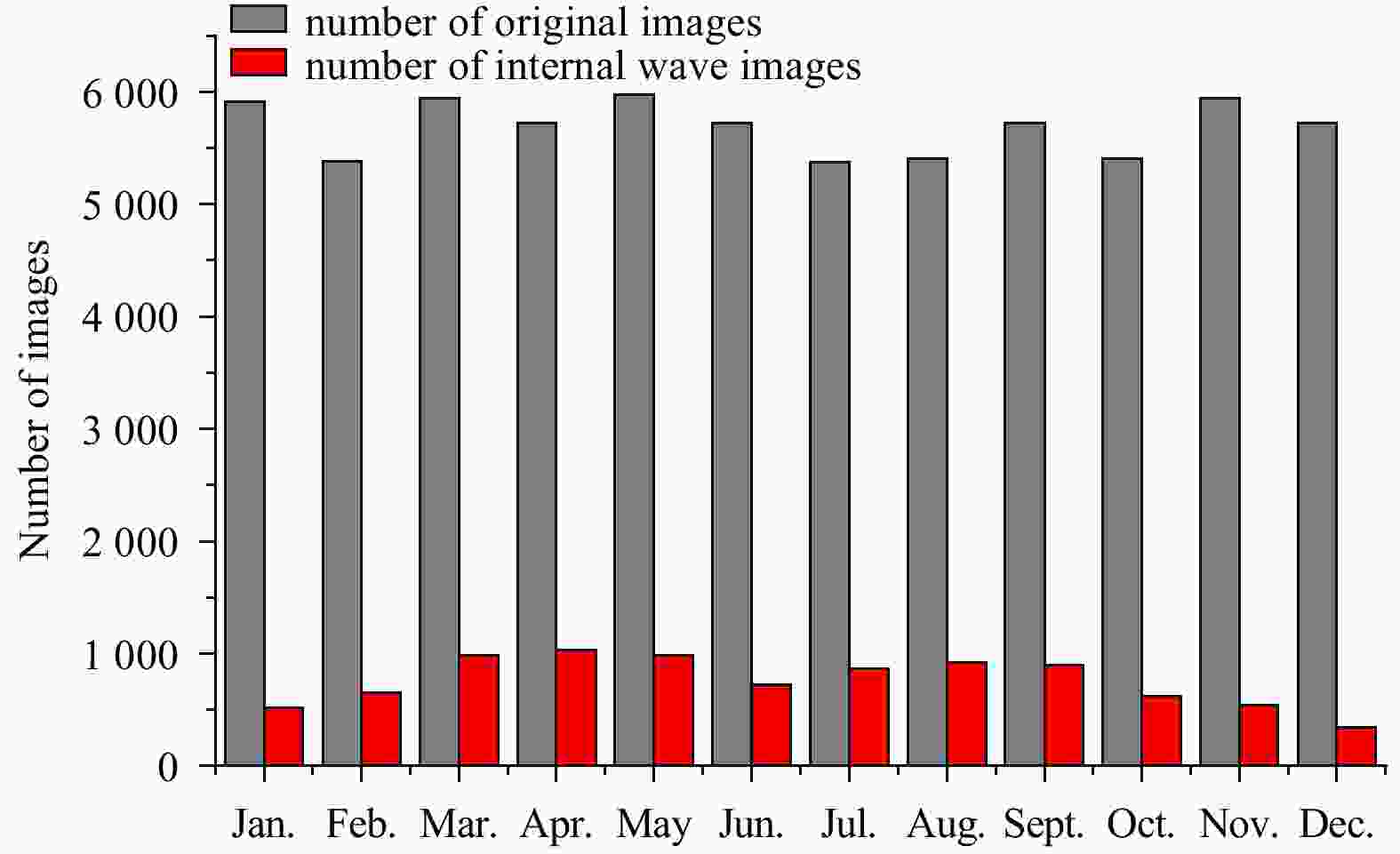
 下载:
下载:
